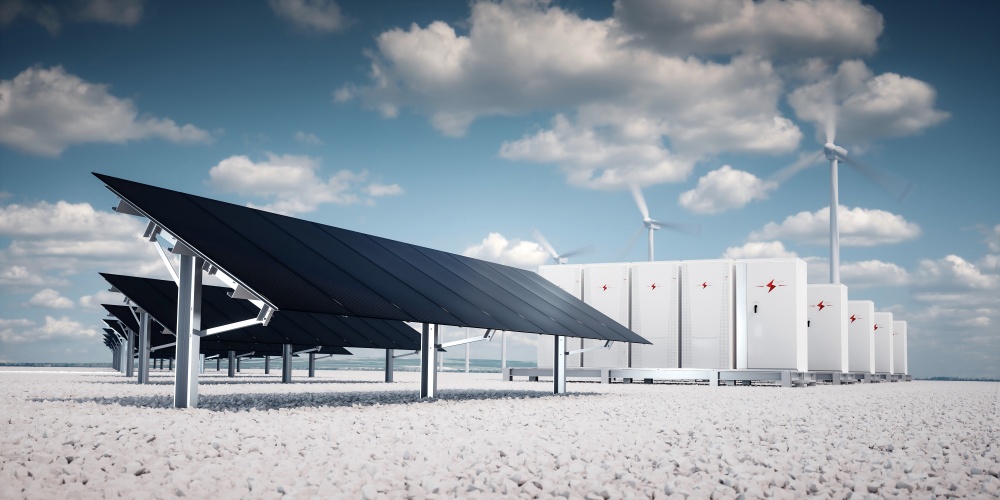As the global push for carbon neutrality intensifies, lithium-ion batteries—especially lithium iron phosphate battery (LiFePO4) systems—have become the core enabler of battery energy storage system suppliers. This article explores the international trajectory of lithium battery deployment in energy storage from multiple dimensions: technology, geography, policy, and corporate strategy.
Market Scale and Growth Drivers
1. Explosive Growth in Demand
By 2025, global newly installed energy storage capacity is expected to reach 220–250 GWh, with battery demand exceeding 400 GWh. This surge is driven by the rise in wind and solar grid connection requirements (with energy storage ratios climbing to over 25%) and falling LCOS in commercial and industrial applications (<0.6 CNY/Wh).
Energy storage and EVs create a dual-engine effect: global lithium battery demand is projected to grow by over 30% in 2025, reaching 2,344 GWh in shipments. By 2033, the global lithium ion battery market is expected to exceed $557.1 billion (CAGR 16.75%).
2. Expanding Application Scenarios
Home Energy Storage: In Europe and North America, average home installations exceed 15kWh. Emerging markets like Pakistan and Nigeria face energy shortages, where home energy storage prices are 20% higher than in Europe, with gross margins exceeding 50%.
New Frontiers: Electric ships (expected to exceed $2.8 billion by 2025) and eVTOL aircraft (requiring >400Wh/kg) are emerging as new areas of growth.
Regional Landscape and Opportunities
North America: Policy-driven growth but high entry thresholds. The IRA law raises localization standards. By 2025, energy storage installations may exceed 65 GWh, with Chinese suppliers accounting for 80%. However, tariffs may raise costs by 15%–20%.
Europe: Household storage is rebounding (Germany offers 30% subsidies), but commercial storage remains sluggish (IRR 8%–11%). New installations will reach 3.6 GWh by 2025 (YoY +60%), with payback periods shortening to 3–4 years.
Middle East: Saudi Arabia leads with megaprojects; Chinese enterprises win 90% of bids. Sungrow won the 7.8 GWh SDC Phase II project; BYD is bidding for the 8 GWh SEC Phase III.
Asia-Pacific: Leading the global market (54% share); sodium-ion batteries gain traction in Southeast Asia due to weak grid infrastructure. Sodium batteries could reach 10% market share in 2025 and cost 30% less than lithium.
Emerging Markets: Sub-Saharan Africa (Liberia exports up 73,868% YoY) and Latin America (Chilean export price: $723/unit) are booming. Pakistan’s home energy storage shipments exceed 50,000 units/month, with Deye commanding 70% market share.
Technological Advancements
Solid-State Batteries: Achieving automotive-grade mass production by 2025 (>400Wh/kg), with CATL and Toyota advancing sulfide-based electrolytes.
Sodium-Ion Batteries: Offering substantial cost advantages (sodium resources are 420× more abundant than lithium). CATL’s "Qilin Battery" has 30% lower cost. Sodium batteries are projected to capture 25% of the home energy storage market by 2035.
Ultra-Long Life Cells: Envision’s 700+Ah energy storage cells exceed 10,000 cycles, enabling "solar-storage lifespan alignment."
2. System Integration Innovations
String-Type Architecture: Becoming mainstream (Huaneng’s 4.5 GWh project mandates this).
Integrated AC/DC Design: Reduces grid connection time by 50%.
AI Operation & Maintenance: Huawei and Sungrow AI scheduling systems boost power station returns by 5%–8%.
China’s Global Strategy Evolution
1. Overseas Production Deployment
Southeast Asia: Indonesia (rich in nickel) and Malaysia emerge as capacity relocation hubs. EVE and REPT allocate 40% of production abroad.
Morocco: Capitalizing on phosphate resources and U.S. FTA tariff benefits to establish lithium iron phosphate battery supply chains.
Europe Localization: To meet EU carbon footprint requirements (40% reduction by 2030), CATL and Gotion are building plants in Germany.
2. From Product Export to Value Co-Creation
Technical Synergy: Hongzheng Storage partners with European firms to localize EMS systems using AI scheduling.
Service Network: A Prague technical center boosts spare part logistics by 40% with 24/7 maintenance support.
Certification Barrier-Breaking: Gaining IEC/UL dual certification to comply with the EU’s Battery Passport and traceability standards.
Risks and Challenges
Supply Chain Security: Lithium and nickel price volatility expected to persist. The EU mandates a 90% lithium recycling rate.
Tech Substitution Risks: Sodium-ion and flow batteries are accelerating; India promotes sodium to reduce lithium dependence.
Conclusion: The Future Battlefield
The global battery energy storage system suppliers’ landscape is rapidly becoming multipolar:
Technology: Solid-state battery commercialization (>400Wh/kg) and sodium-ion’s <$70/kWh cost benchmark will define competitiveness.
Ecosystem: Dominance will depend on forming tech-channel-service loops in high-growth regions like Saudi Arabia and Pakistan.
Compliance: EU Battery Passport (blockchain traceability) and U.S. IRA localization (80% by 2025) form the regulatory bottom line.
China’s Path to Globalization:
From Southeast Asian manufacturing hubs → to localized European service networks → to deep integration in Middle Eastern projects—Chinese lithium ion battery suppliers are evolving from supply chain alternatives to co-creators of global energy standards.
Inquiry more product details from the lithium ion battery supplier:
WhatsApp/Wechat/Mobile: +86 13332949210
Email: info@xihobattery.com
Website: www.xihopower.com
 +86 13332949210
+86 13332949210 info@xihobattery.com
info@xihobattery.com







 Xiho
Xiho Aug 06 2025
Aug 06 2025











